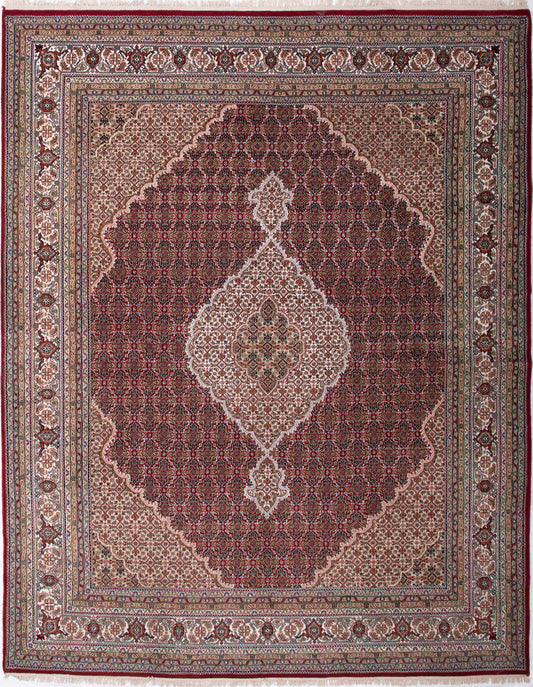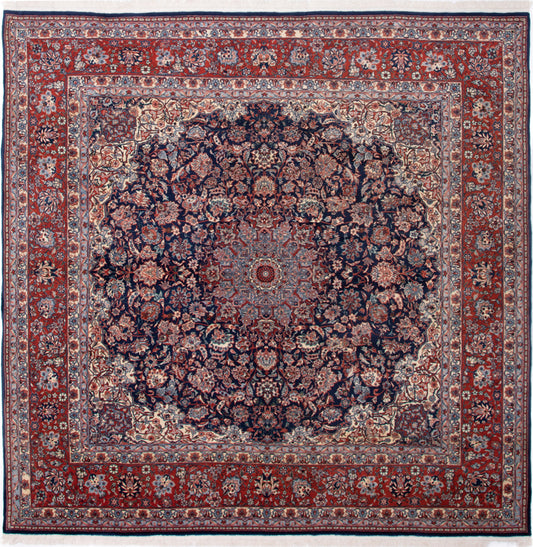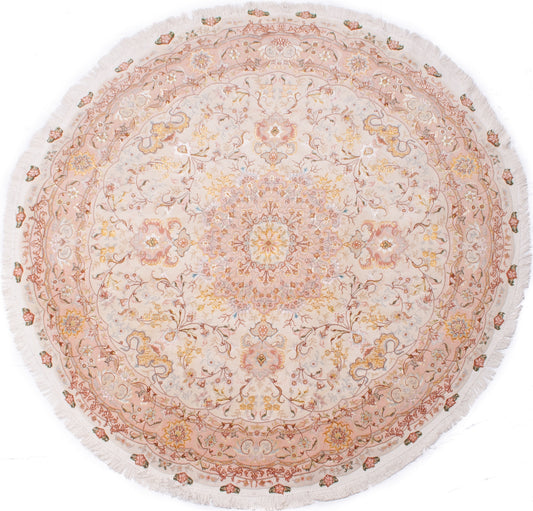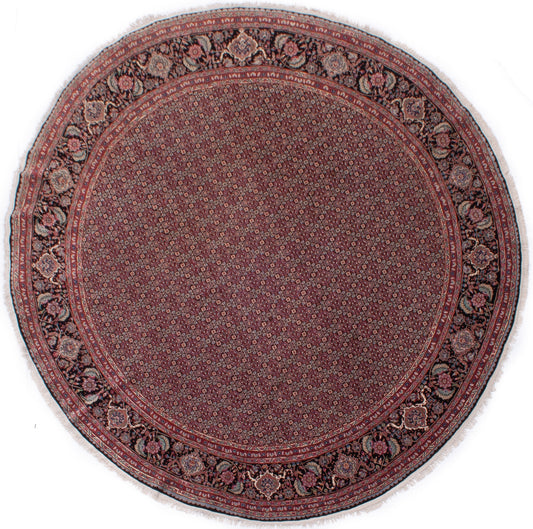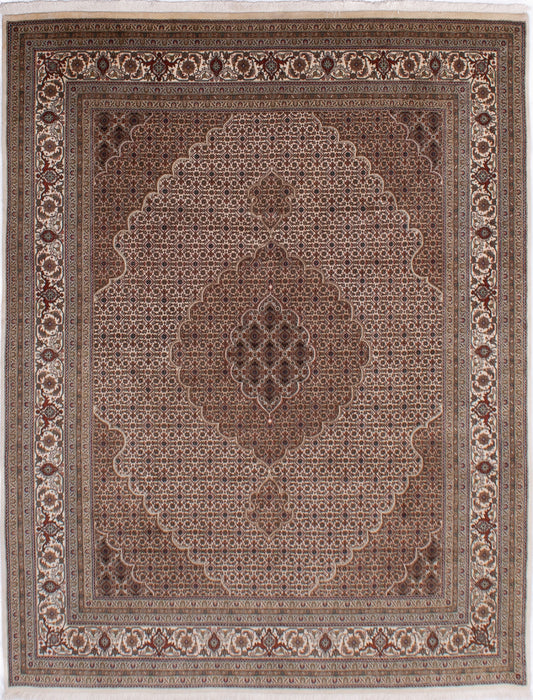Tabriz Rug History & Origin Guide
Located in the northwestern region of Iran, Tabriz is a city steeped in history and renowned for its wide ranging and exquisite handmade rugs. Famed for their exceptional craftsmanship and captivating designs, Tabriz rugs have been admired by collectors and enthusiasts for centuries. Join us as we explore the enchanting heritage, artistry, and distinctive qualities of these masterful creations. Be sure to browse our carefully curated collection of Tabriz rugs.
The Rich History of Tabriz and Rug Weaving
As a prominent centre of trade and culture, Tabriz has a long-standing tradition of rug weaving, dating back to the 16th century during the Safavid dynasty. The city's strategic location along the Silk Road fostered its growth and development, allowing artisans to perfect their craft and create some of the most sought-after rugs in the world.
Distinctive Features of Tabriz Rugs
Tabriz rugs are celebrated for their diverse and intricate patterns, which can range from elaborate floral motifs and central medallions to geometric designs inspired by the city's rich cultural heritage. These rugs often feature a sophisticated colour palette, incorporating shades of red, blue, and cream. The knot density of Tabriz rugs can vary significantly, with some of the finest examples boasting up to 800 knots per square inch.
Materials and Weaving Techniques
The artisans of Tabriz utilise high-quality materials, such as silk and fine wool, to create their luxurious rugs. Tabriz rugs are made using the Turkish (symmetrical) knotting technique.
Tabriz Rug Measurement: Understanding "Raj"
In addition to their diverse patterns and fine materials, Tabriz rugs are also measured using a unique unit called "Raj." The "Raj" measurement system is a traditional method of evaluating the fineness of a rug's weave, specifically applied to rugs originating from Tabriz.
One "Raj" is equivalent to 7cm (around 2.5 inches), and the measurement corresponds to the number of knots that fit within this length across the width of the rug. Consequently, a higher "Raj" number signifies a finer weave and greater knot density, resulting in more intricate designs and increased rug quality.
It is important to note that "Raj" is just one of the factors to consider when evaluating a Tabriz rug's quality. Other aspects, such as the materials used, the craftsmanship, and the overall design, also contribute to the rug's value and appeal.
Common Raj measurements for Tabriz rugs include:
- 30-35 Raj: Rugs with a moderate knot density, typically featuring simpler designs and a more affordable price range.
- 40-50 Raj: These rugs have a higher knot density, resulting in more detailed patterns and a higher overall quality.
- 60+ Raj: Rugs in this category boast an exceptional knot density, showcasing the most intricate designs and finest craftsmanship. They are considered rare and highly sought after by collectors and enthusiasts.
When selecting a Tabriz rug, consider the "Raj" measurement alongside other factors, such as the rug's design, materials, and overall appeal, to ensure you find the perfect addition to your living space.
Exploring Tabriz and Its Attractions
Visitors to Tabriz can immerse themselves in the city's rich history and marvel at its stunning architectural landmarks. Some of the most notable attractions in Tabriz include:
- Tabriz Historic Bazaar Complex: A UNESCO World Heritage Site, this ancient bazaar offers a fascinating glimpse into the city's past.
- Elgoli Park: A beautiful park surrounding an artificial lake, perfect for a leisurely stroll or picnic.
- Constitution House: A historic house museum that played a significant role during the Constitutional Revolution in Iran.
Beyond its historical sites, Tabriz is home to a vibrant community of skilled artisans who continue the tradition of rug weaving. A visit to the city's bustling bazaars provides an opportunity to witness local weavers at work and perhaps acquire an authentic Tabriz rug as a cherished keepsake.
Climate and Weather in Tabriz
Tabriz experiences a continental climate, with hot summers and cold winters. The best times to visit are during spring (April to June) and autumn (September to November), when the weather is mild and pleasant, making it ideal for exploring the city's cultural sites and enjoying its lively atmosphere.
Discover the Enchantment of Tabriz Rugs
Embrace the captivating charm of Tabriz rugs and bring a piece of this rich history and artistry into your home. Explore our exclusive collection of handcrafted Tabriz rugs and find the perfect addition to your living space. Experience the enchantment of these breath-taking rugs, expertly crafted to showcase the exceptional artistry of their creators. Begin your journey into the world of Tabriz rugs today.
Browse Our Current Selection of Tabriz Rugs
-
Semi-Antique Persian Tabriz Rug
Regular price £4,455.00Regular priceUnit price / per -
Persian Mahi Tabriz Rug
Regular price £1,255.00Regular priceUnit price / per£1,485.00Sale price £1,255.00Sale -
Indian Mahi Tabriz Rug
Regular price £4,145.00Regular priceUnit price / per -
Indian Mahi Tabriz Rug
Regular price £2,065.00Regular priceUnit price / per -
Indian Mahi Tabriz Rug
Regular price £1,305.00Regular priceUnit price / per -
Indian Mahi Tabriz Runner
Regular price £3,075.00Regular priceUnit price / per -
Indian Mahi Tabriz Rug
Regular price £2,795.00Regular priceUnit price / per -
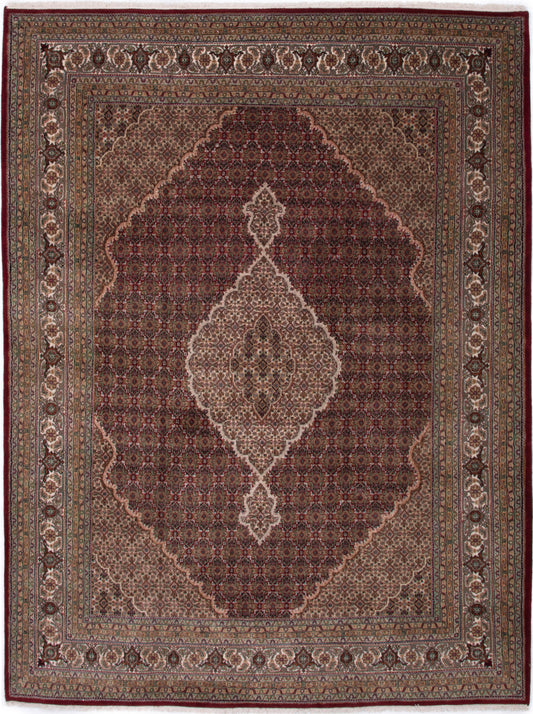 Sold
SoldIndian Mahi Tabriz
Regular price £2,635.00Regular priceUnit price / per -
Chinese Tabriz Square Rug
Regular price £2,445.00Regular priceUnit price / per -
Persian Tabriz Round Rug
Regular price £5,925.00Regular priceUnit price / per -
Chinese Mahi Tabriz Round Rug
Regular price £4,965.00Regular priceUnit price / per -
Indian Mahi Tabriz Rug
Regular price £2,635.00Regular priceUnit price / per







